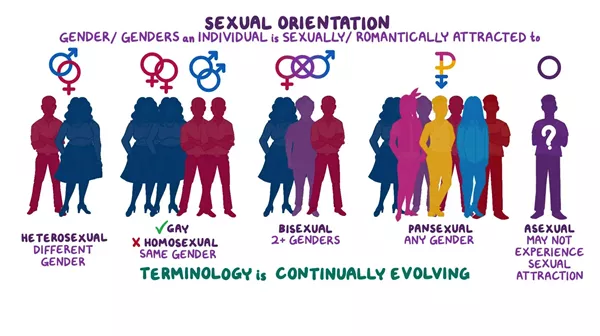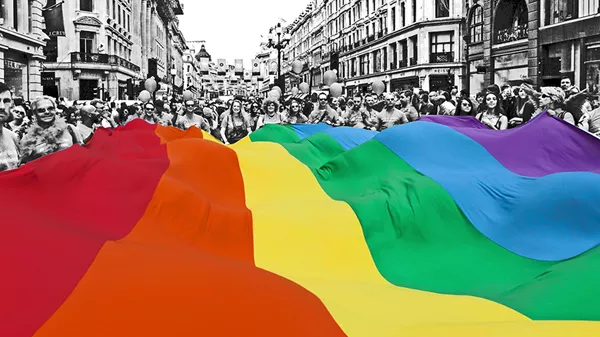Understanding the LGBTQ+ Spectrum: A Guide to Sexual Orientations
Beyond "Gay" or "Straight": Exploring the Rainbow of Identities
Are you curious about the diverse landscape of sexual orientations that exist beyond the traditional "gay" or "straight" labels? The LGBTQ+ spectrum is a rich tapestry of identities, each with its own unique nuances and experiences. Understanding this spectrum is crucial for fostering inclusivity, promoting self-acceptance, and building a more compassionate world.

Questioning where you fit in? Unsure of your sexual orientation? Take our quick, confidential sexuality quiz to begin your journey of self-discovery!
What is Sexual Orientation? A Deeper Dive
Sexual orientation refers to a person's enduring emotional, romantic, or sexual attraction to other people. It's an intrinsic part of who we are, and it plays a significant role in shaping our relationships, experiences, and sense of self.

Defining Sexual Attraction
Sexual attraction encompasses a range of feelings, from romantic affection and emotional connection to physical desire and sexual arousal. It's a complex and multifaceted experience that varies from person to person.
The Difference Between Sexual Orientation and Gender Identity
It's essential to distinguish between sexual orientation and gender identity. Sexual orientation refers to who you are attracted to, while gender identity refers to who you are – your internal sense of being male, female, both, or neither.
Fluidity and Change
Sexual orientation is not always fixed or static. Some people experience fluidity in their attractions over time, while others maintain a consistent orientation throughout their lives. There's no right or wrong way to experience your sexuality.
Exploring Common Sexual Orientations Within the LGBTQ+ Community
The LGBTQ+ community encompasses a wide range of sexual orientations, each with its own unique identity and experiences. Here are some of the most common:

Lesbian
A lesbian is a woman who is emotionally, romantically, or sexually attracted to other women.
Gay
"Gay" typically refers to a man who is emotionally, romantically, or sexually attracted to other men. However, the term can also be used more broadly to describe anyone who is attracted to members of the same sex. Curious if you might be gay? Explore your feelings and attractions with our Am I Gay? quiz!
Bisexual
Bisexual individuals are attracted to both men and women. Their attraction may be equal, or it may vary at different times in their lives.
Could you be bisexual? Explore your attractions and feelings with our Bisexuality Quiz! It's a safe space to understand yourself better.
Pansexual
Pansexual individuals are attracted to people regardless of their gender identity. They are attracted to the person as a whole, rather than being limited by traditional notions of sex or gender.
Asexual
Asexual individuals experience little or no sexual attraction to others. However, they may still experience romantic attraction, emotional connection, or other forms of intimacy.
Do you identify with the description of asexuality? Learn more about asexuality and explore your feelings with our free online quiz!
Demisexual
Demisexual individuals only experience sexual attraction to someone after forming a strong emotional bond with them.
The "Q" in LGBTQ+: Understanding Queer Identity
The term "queer" has a complex and often controversial history. It was once used as a derogatory slur against LGBTQ+ people, but it has since been reclaimed by many in the community as a term of empowerment and self-identification.
Historical Context
In the past, "queer" was used to stigmatize and marginalize LGBTQ+ individuals. However, in recent decades, activists and scholars have embraced the term as a way to challenge traditional norms and celebrate the diversity of LGBTQ+ identities.

Queer as an Umbrella Term
Today, "queer" is often used as an umbrella term to encompass a wide range of non-heterosexual and non-cisgender identities. It's a way of signaling solidarity and challenging the rigid categories of "gay," "lesbian," and "bisexual."
Beyond Labels: Why Self-Discovery Matters More
While labels can be helpful for finding community and understanding your own experiences, it's important to remember that they are not the whole story. Ultimately, self-discovery is more important than finding the "right" label.
The Limitations of Labels
Labels can be limiting and restrictive, especially if they don't accurately reflect your individual experiences or if they make you feel pressured to conform to certain expectations.
Listening to Your Own Feelings
The most important thing is to listen to your own feelings and experiences. Pay attention to what brings you joy, fulfillment, and connection.
Seeking Support and Community
Connecting with others who share similar experiences can be incredibly validating and empowering. Seek out LGBTQ+ communities and support networks where you can feel safe, accepted, and understood.
Feeling lost or unsure? Sometimes a simple quiz can provide a starting point. Take our Am I Gay? quiz to explore your attractions and start your journey of self-discovery. It's private, confidential, and designed to help you understand yourself better.
Common Misconceptions About Sexual Orientations
There are many misconceptions and stereotypes surrounding different sexual orientations. It's important to challenge these myths and promote accurate information.
Bisexuality as a "Phase"
Bisexuality is a valid and enduring sexual orientation, not a temporary phase or a sign of confusion.
Asexuality as a Lack of Libido
Asexuality is not the same as a lack of libido or a medical condition. It's a distinct sexual orientation characterized by a lack of sexual attraction to others.
Pansexuality as the Same as Bisexuality
While both pansexuality and bisexuality involve attraction to more than one gender, pansexuality specifically emphasizes attraction regardless of gender identity.
Gay Men as "Feminine" and Lesbians as "Masculine"
Gender expression has nothing to do with sexual orientation. Gay men and lesbians can express themselves in a variety of ways, regardless of traditional gender norms.
Navigating Societal Expectations and Coming Out
Coming out is a personal journey that unfolds differently for everyone. There's no right or wrong way to come out, and it's important to prioritize your own safety and well-being.
When and How to Come Out
Choose a time and place where you feel safe and supported. Start by coming out to people you trust and who are likely to be accepting.
Dealing with Family and Friends
Not everyone will react positively to your coming out. Be prepared for a range of responses, and remember that it's okay to set boundaries and protect yourself from negativity.
Finding Safe Spaces and Support Networks
Seek out LGBTQ+ community centers, support groups, and online forums where you can connect with others who understand what you're going through.
The Importance of Allyship in the LGBTQ+ Community
Allies play a crucial role in supporting the LGBTQ+ community and creating a more inclusive world.

What Does It Mean to Be an Ally?
An ally is someone who supports and advocates for the LGBTQ+ community, even if they are not part of it themselves.
Practical Ways to Support the LGBTQ+ Community
- Speak out against discrimination and prejudice.
- Educate yourself and others about LGBTQ+ issues.
- Support LGBTQ+ organizations and businesses.
- Create safe and inclusive spaces for LGBTQ+ people.
Educating Yourself and Others
The first step to becoming an effective ally is to educate yourself about LGBTQ+ issues and experiences. Read books, watch documentaries, attend workshops, and listen to the voices of LGBTQ+ people.
Embracing Diversity and Celebrating Identity
The LGBTQ+ spectrum is a celebration of diversity, resilience, and the human spirit. By understanding and embracing the full range of sexual orientations, we can create a more inclusive and accepting world for all.

Ready to take the next step in understanding your own identity? Don't wait! Our [quizzes] (https://gayquiz.org) are designed to provide a safe and supportive space for exploration. Click here to begin!
FAQ: Frequently Asked Questions About Sexual Orientations
Here are some frequently asked questions about sexual orientations:
- What does it mean to be pansexual? Pansexual individuals are attracted to people regardless of their gender identity. If you think that you may be pansexual then take our online sexuality quiz.
- What is the difference between bisexual and pansexual? While both involve attraction to more than one gender, pansexuality emphasizes attraction regardless of gender, whereas bisexuality is attraction to both men and women.
- How do I know if I'm asexual? Asexuality is characterized by a lack of sexual attraction to others.
- Is asexuality a choice? No, asexuality is a sexual orientation, not a choice.
- What does it mean to be demisexual? Demisexual individuals only experience sexual attraction to someone after forming a strong emotional bond with them.
- What's the difference between gender identity and sexual orientation? Gender identity refers to your internal sense of being male, female, both, or neither, while sexual orientation refers to who you are attracted to. You may also take our are you gay quiz to help discover who you are attracted to.